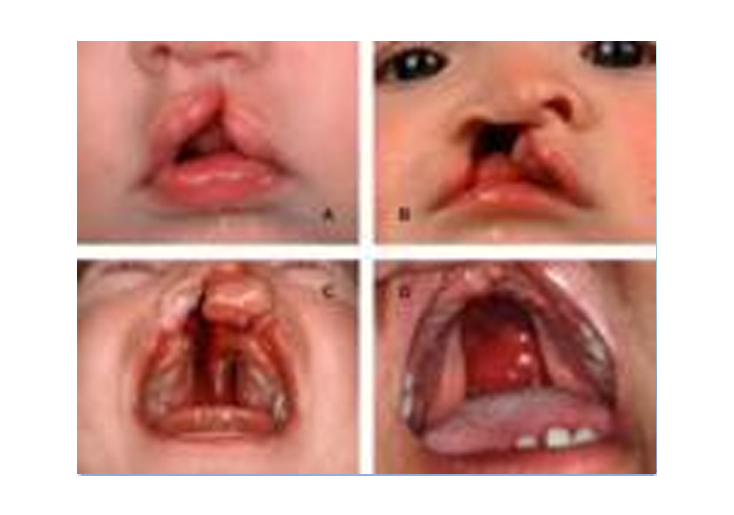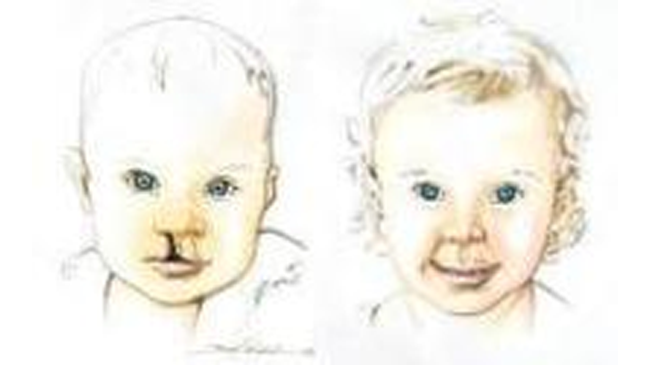- Email : rohanmasc@yahoo.com
- Email : rohanorthodontics@gmail.com
- Phone: 0824-2428908/4265408 (Clinic)
- Phone: 0824-2415408/2417508(Residence)
- Whatsapp :+91 96866 75408
CLEFTLIP
 How Does Cleft Lip/Palate Affect the Teeth?
How Does Cleft Lip/Palate Affect the Teeth?
A cleft of the lip, gum (alveolus), and/or palate in the mouth can produce a variety of dental problems. These may involve the number, size, shape, and position of both the baby teeth and the permanent teeth. The teeth most commonly affected by the clefting process are those in the area of the cleft, which usually occurs between the cuspid (eye tooth) and the lateral incisor. Thus, the lateral incisor is most often affected. In some cases the lateral incisor may be entirely absent. In other cases there may be a duplicate of the lateral incisor so that one is present on each side of the cleft. In still other cases the incisor, or other teeth, may be present on each side of the cleft. In still other cases, the incisor, or other teeth, may be present but may be poorly formed with an abnormally shaped crown and/or root. Finally, the teeth in the area of the cleft may be displaced, resulting in their erupting into abnormal positions. Occasionally, the central incisors on the cleft side may have some of the same problems as the lateral incisor.
 What Does this Mean for Future Dental Care?
What Does this Mean for Future Dental Care?
A child with a cleft lip/palate requires the same regular dental care as the child without a cleft. However, since children with clefts may have special problems related to missing, malformed or malpositioned teeth, they require early evaluation by a dentist who is familiar with the needs of a child with a cleft.

 Early Dental Care
Early Dental Care
With proper care, children born with a cleft lip and/or palate can have healthy teeth. This requires proper cleaning, good nutrition and fluoride treatment. Appropriate cleaning with a small, soft -bristled toothbrush should begin as soon as teeth erupt. Oral hygiene instructions and preventative counseling can be provided by a pediatric dentist or a general dentist. Many dentists recommend that the first dental visit be scheduled at about one year of age or even earlier if there are special dental problems. The early evaluation is usually provided through the Cleft Palate Team. Routine dental care with a local dentist begins at about three years of age. Treatment recommended depends upon many factors. Some children require only preventative care, while others will need fillings or removal of a tooth. Good communication between a local dentist and the cleft palate team is important.
 Orthodontic Care
Orthodontic Care
Orthodontic care is given to achieve the best esthetics, function and stability of a child’s bite. This treatment may include traditional braces, orthopedic appliances designed to affect growth of the jaws, or simple removable appliances.
Since facial growth is an important aspect of orthodontic care, the first orthodontic evaluation may take place even before the child has any teeth. As the baby teeth and later, the permanent teeth begin to erupt, the orthodontist monitors the child’s dental and facial development, and intervenes with treatment when necessary. Thus, it is not unusual for a child with a cleft to have two or even three carefully planned phases of treatment. Each phase will have specific goals, and in between phases, appliances are removed. The final phase of treatment begins near the time when all permanent teeth have erupted. Orthodontic care must be carefully coordinated with any surgical or prosthodontic care to achieve the best results.
 Coordinated Dental-Surgical Care
Coordinated Dental-Surgical Care
Coordination of treatment between the surgeon and dental specialist is important since several procedures may be scheduled during the same anesthesia. Restorations or dental extractions can be scheduled at the same time as other surgery

Coordination between the surgeon and the orthodontist becomes most important in the management of the bony defect in the upper jaw that may result from the cleft. Reconstruction of the cleft defect may be accomplished with a bone graft performed by the surgeon. The orthodontist may place an appliance on the teeth of the upper jaw to prepare for the bone graft. A retainer is usually placed after the bone graft until full braces are applied.
When the child approaches adolescence, the orthodontist and the surgeon again coordinate their efforts if the teeth do not meet properly because the jaws are in abnormal positions. If the tooth relations cannot be made normal by orthodontics alone, a combined approach of both orthodontics and surgical repositioning of the jaws is necessary. Such surgery is usually preformed after the pubertal growth spurt is completed.
 Prosthodontic Care
Prosthodontic Care
Prosthodontic care is given to replace missing teeth and other oral structures with prosthetic or artificial appliances. Perhaps the best known prosthodontic appliances are crowns or bridges designed to replace missing teeth. Prosthodontists may also make other oral appliances, such as speech bulb or palatal lift. This appliance helps to close the nose from the mouth and improve speech. Maxillofacial prosthodontists are specialists who also make prostheses for other facial structures. The prosthodontist must coordinate treatment with the surgeon, orthodontist and speech-language pathologist to assure the best possible result. Good dental care is essential so that the teeth holding the appliance are healthy.